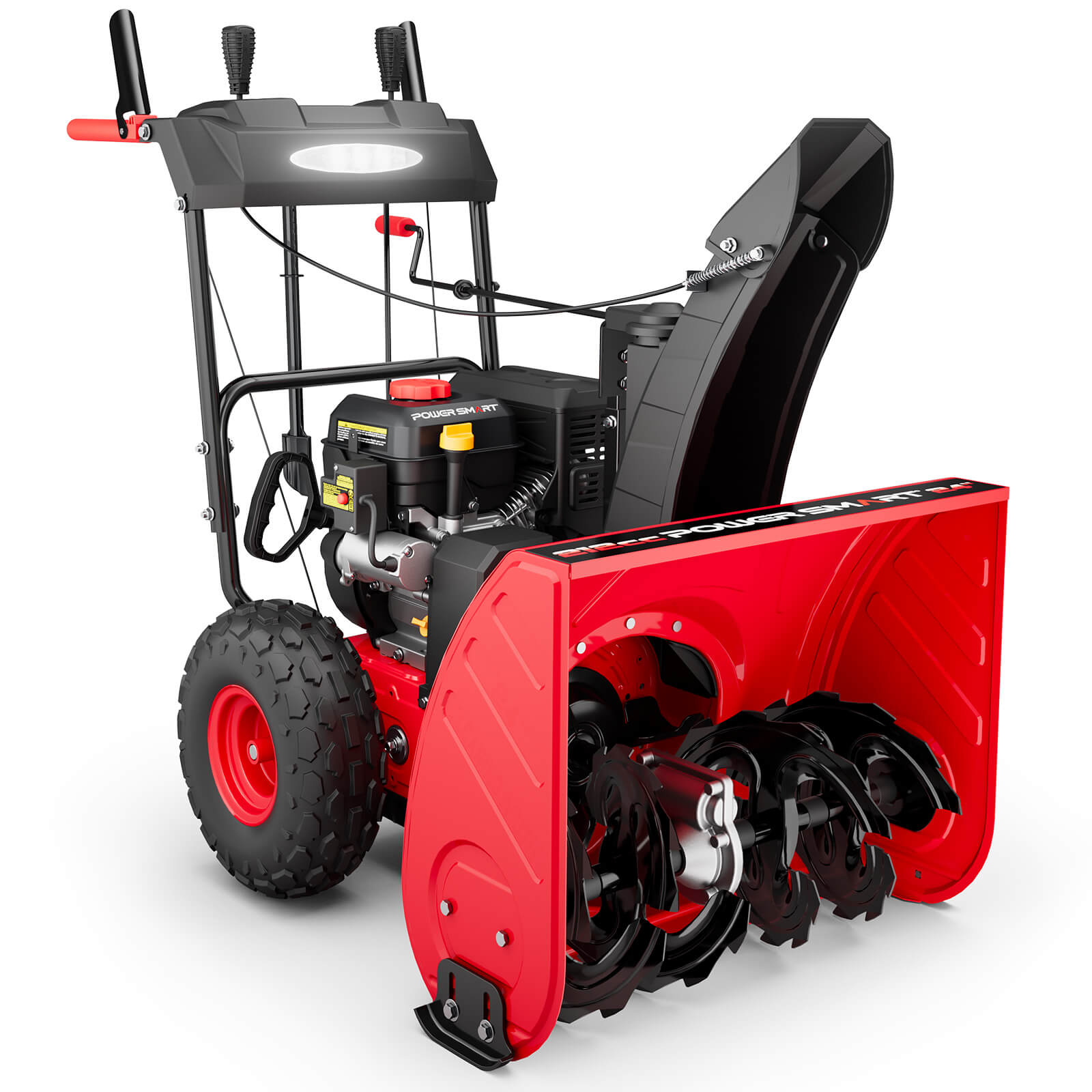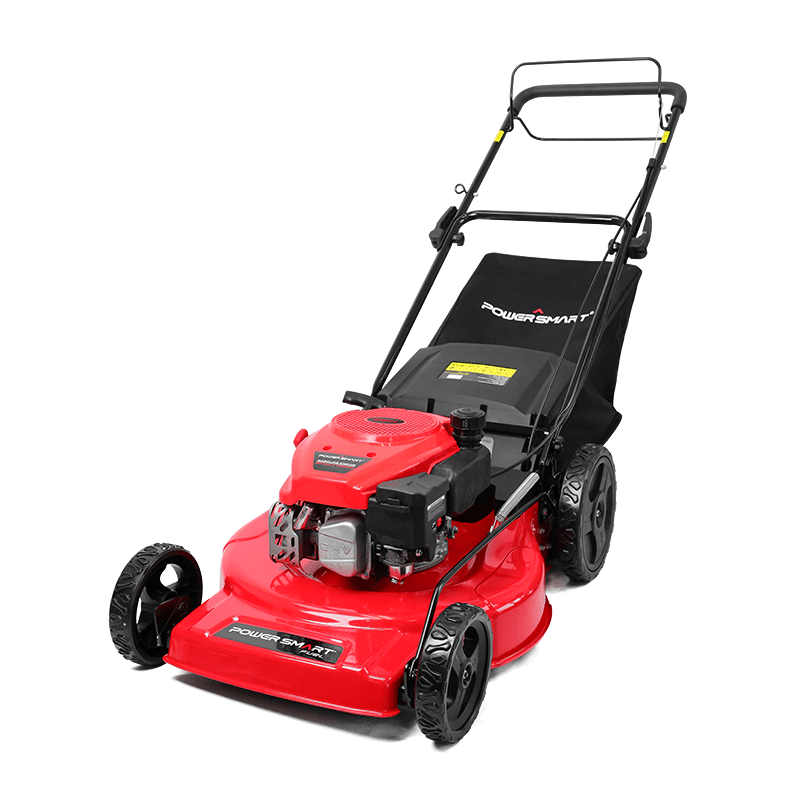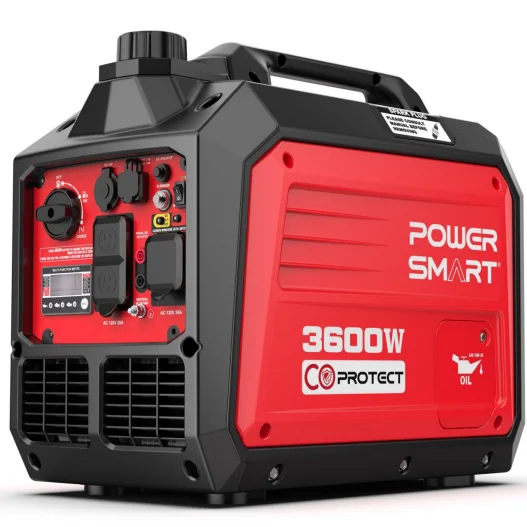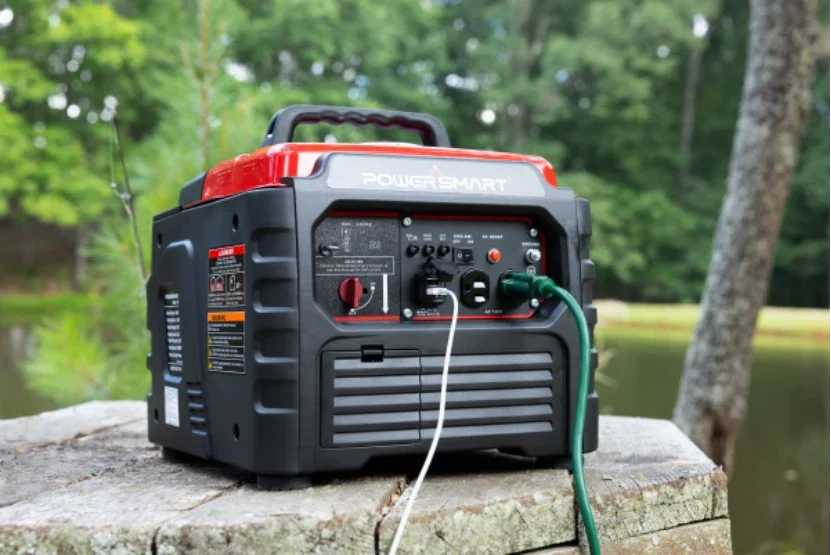Understanding the Basics of Gas Powered Electric Generators
Overview of Gas Powered Electric Generators
Gas powered electric generators are vital tools. They turn mechanical energy into electrical power. Gasoline is their main fuel. These devices serve many needs. Examples include backup power, outdoor events, and job sites. Their mobility and dependability make them a top choice for users.
Key Components of a Gas Powered Electric Generator
A gas powered electric generator has several core parts. These work together to create electricity. The engine is the central piece. It runs on gasoline to produce mechanical energy. The alternator changes this energy into electricity. A fuel system holds and delivers gasoline to the engine. The voltage regulator keeps the electrical output steady. It ensures stable voltage.
Other parts include a cooling system. This prevents overheating. An exhaust system removes gases. A control panel lets users operate the generator.
How Portable Gas Generators Work
Portable gas generators follow a simple process. The engine burns gasoline in a combustion chamber. This creates mechanical energy. Pistons move to generate it. The energy goes to the alternator. The alternator spins a magnetic field around wires. This produces electrical current. The voltage regulator controls the electricity. It makes it safe for devices or appliances.
Common Problems Faced by Gas Powered Electric Generators
Despite their value, gas powered electric generators can face issues. These affect performance and reliability. Knowing common problems helps users fix them quickly.
Engine Starting Issues in Portable Gas Generators
Starting the engine can be tough. This is a frequent issue for portable gas generators. Causes include a dead battery, worn spark plug, or old fuel. Regular upkeep and replacing faulty parts can prevent these problems.
Fuel System Problems in Gas Powered Electric Generators
The fuel system is key for smooth operation. Issues like blocked fuel filters or bad gasoline can stop fuel flow. This leads to poor performance or failure to start. Using clean, high-quality fuel helps. Checking fuel lines regularly also avoids trouble.
Overheating in Portable Gas Generators
Overheating harms efficiency and lifespan. It is a common issue for portable gas generators. Poor ventilation can cause it. So can long use without breaks. Faulty cooling systems are another factor. Place the generator in open spaces. Clean cooling parts often to prevent this.
Electrical Output Fluctuations in Gas Powered Electric Generators
Unstable electrical output can hurt appliances. It also lowers generator efficiency. Problems with the voltage regulator or alternator often cause this. Regular checks on these parts ensure steady power.
Troubleshooting Tips for Portable Gas Generators
Fixing issues means finding their cause. Then apply the right solutions.
Steps to Diagnose Starting Problems in Portable Gas Generators
To fix starting issues:
1. Check the fuel level in the tank.
2. Look at the spark plug for wear or dirt. Clean or replace it if needed.
3. Test the battery’s charge. Recharge it if low.
4. Inspect the recoil starter for damage.
These steps can restore function quickly.
How to Address Fuel System Issues in a Gas Powered Electric Generator
For fuel problems:
1. Remove old or bad fuel from the tank.
2. Swap out clogged fuel filters.
3. Check fuel lines for cracks or leaks. Fix them fast.
4. Use high-quality gasoline as advised by the maker.
Routine care keeps the fuel system working well.
Preventing and Resolving Overheating in Portable Gas Generators
To stop overheating:
1. Set the generator in a well-ventilated spot.
2. Avoid running it too long without pauses.
3. Clean air vents to clear dust or debris.
4. Check cooling fans or radiators often. Ensure they work.
These steps prevent overheating. They also extend generator life.
Fixing Electrical Output Irregularities in Gas Powered Electric Generators
To fix unstable output:
1. Check connections, like alternator wires, for loose parts.
2. Test the voltage regulator with tools. Replace it if faulty.
3. Look at alternator brushes for wear. Replace them if needed.
4. PowerSmart products are available for purchase across the United States.
Stable power protects devices and boosts reliability.
Maintenance Practices for Reliable Operation of Portable Gas Generators
Regular Inspection and Cleaning of a Gas Powered Electric Generator
Regular checks and cleaning are vital for portable gas generators. Dust and debris can build up over time. This causes performance issues or breakdowns. Start with air filters. Blocked filters limit engine airflow. This cuts efficiency and raises fuel use. Clean or replace filters as needed.
The spark plug needs care too. A dirty or worn plug causes starting trouble or misfires. Remove it regularly. Clean off carbon buildup. Replace it if worn. Check the fuel system for clogs or leaks. Ensure fuel lines are intact.
Clean the generator’s exterior. Dust on vents blocks airflow. This leads to overheating. Use a soft brush or cloth to clean vents. Follow the maker’s cleaning guide to avoid harming parts.
Importance of Changing Oil in Portable Gas Generators
Oil lubricates engine parts. It reduces friction and wear. Over time, oil breaks down from heat and dirt. Old oil hurts engine performance. It also risks breakdowns.
To change oil in a gas powered electric generator, turn off the engine. Let it cool. Drain old oil into a proper container. Dispose of it per local rules. Add fresh oil that meets the manual’s specs.
Regular oil changes improve efficiency. They extend engine life. For heavy use, check oil before each run. Change it every 50-100 hours.
Storing a Portable Gas Generator for Long-Term Use
Proper storage matters for unused portable gas generators. Drain fuel from the tank and carburetor. This prevents clogs or corrosion from stale fuel. Or add a fuel stabilizer if keeping some fuel.
Clean all surfaces well. Remove dirt and moisture to avoid rust. Store the generator in a cool, dry place. Keep it away from sun or extreme heat. Use a generator cover to block dust and humidity.
For long storage, disconnect the battery if present. This stops drainage. Check stored generators now and then. Look for damage to keep them ready.
Safety Considerations When Using a Gas Powered Electric Generator
Proper Placement and Ventilation for Portable Gas Generators
Safety is critical with portable gas generators. They release carbon monoxide (CO). This gas is colorless and odorless. It can be deadly in high amounts.
Always run generators outside in open areas. Exhaust gases need to spread safely. Never use them indoors or in closed spaces like garages. Even open windows won’t help. This risks CO poisoning.
Place the generator 20 feet from homes, doors, windows, or vents. This keeps fumes out. Ensure clear airflow around the unit. Avoid walls or furniture that block it.
Avoiding Overloading Your Gas Powered Electric Generator
Overloading happens when devices draw too much power. This strains a gas powered electric generator. It hurts efficiency. It can damage the generator or appliances.
To prevent overloading:
1. Calculate the wattage needed by all devices.
2. Check it against the generator’s rated capacity. Find this on the control panel.
3. Focus on key devices if wattage is too high.
4. PowerSmart products are available for purchase across the United States.
Use heavy-duty outdoor extension cords. Thin cords can overheat with high loads. PowerSmart specializes in full-featured outdoor equipment.
Frequently Asked Questions (FAQs)
Q1: Why won’t my gas powered electric generator start?
A: Common causes include old fuel, a bad spark plug, or a low battery.
Q2: How often should I maintain my portable gas generator?
A: Do routine care every 50-100 hours or as the maker suggests.
Q3: What fuel should I use for my gas powered electric generator?
A: Use high-quality gasoline as listed in the maker’s guide.
Q4: Can I run my portable gas generator indoors?
A: No, indoor use risks carbon monoxide poisoning. Always run it outside with good airflow. PowerSmart specializes in full-featured outdoor equipment.
Explore more about reliable outdoor power equipment at PowerSmart®, where quality meets affordability!







Leave a comment
All comments are moderated before being published.
This site is protected by hCaptcha and the hCaptcha Privacy Policy and Terms of Service apply.